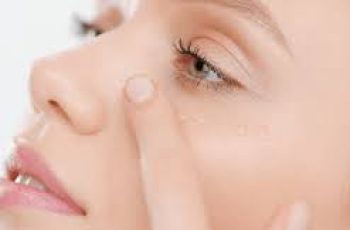Tips for Using a Shampoo Bar
Don’t be offended if you think using a shampoo bar is similar to using a traditional bottle. While there are similarities, we thought we should discuss how to use the bar for best results!
Best Tips for Using a Shampoo Bar
Here’s a step-by-step guide on how to best use a shampoo bar!
Wet your hair thoroughly
Put the shampoo on wet hands and lather
Use your fingers as a comb to pull the lather through wet hair
Gently massage the shampoo into your hair and scalp, just like you would with a regular shampoo
Lather thoroughly
Rinse out, really rinse out, until the shampoo is completely out!
If you have long hair, rinse thoroughly and focus on getting the product to penetrate your hair.
Comb your hair while wet to make sure the lather is completely removed
Repeat if necessary!
Shampoo bars are very gentle on your hair and won’t dry out or strip your hair of oils, and you can even use them every day if you wish. However, you will find that you need to wash your hair less often than usual.
Benefits
There are many benefits to using a shampoo bar. Not only is it a great hair washing product, but you can also rest assured that its packaging (or rather the lack of packaging…) makes shampoo bars a great eco-friendly choice for your bathroom.
You don’t have to worry about not getting the same results as your old bottled shampoo. The lack of packaging doesn’t mean performance suffers. In fact, you’ll find that this more natural method of washing your hair will leave your hair feeling clean, fresh, and light. You’ll also go longer between washes because shampoo bars don’t coat your hair with silicone, so your hair won’t be weighed down by product. You’ll also find that if your hair is often oily, the oils will stay there for longer. You’ll get luscious curls without the hassle of washing your hair several times a week.
Cons
Shampoo bars do have some cons, but none so severe that they’ll be a problem when using them! One of them is that they don’t produce much foam, which can be confusing to some people at first. That’s because we’re used to the super foam that traditional bottled shampoos produce. Since soap bars are more natural, they don’t usually contain the ingredients used to create foam.
Another downside to using shampoo bars is that they leave behind rings of soap in your tub or on a shelf, which can create a mess. Solve this problem by using a soap dish to hold your shampoo when you are done with it. You will find this bowl is easier and quicker to clean, and it will keep your shampoo bars safe and prevent them from sliding into the tub!
The beauty of using a shampoo bar is that it is so simple to use. No frills, no hassle, just a simple wash. You will hardly remember the time before shampoo bars, and your hair will thank you for choosing to ditch the shampoo bottle!
DQH Can I use salicylic acid first and then vitamin C?
It’s easy to create a skincare routine, but knowing how to use it is another thing entirely. In most cases, if you’re not getting the desired skin results, it could be due to the layering of conflicting ingredients. So, is it possible that salicylic acid and vitamin C are such ingredients? Or are these active ingredients the duo that’s been missing from your skincare routine? If you want answers, stick around because today we are going to explain the benefits of salicylic acid and vitamin C and how they can be used in your daily life.
What are the benefits of salicylic acid for skin?
Salicylic acid is one of the most commonly used beta hydroxy acids and is favored by many people with oily, acne-prone skin. This acid is derived from willow bark, and unlike its water-soluble relatives (called alpha-hydroxy acids), salicylic acid is oil-soluble, which means it can penetrate deeper into the lower layers of the skin. Once it reaches the lower layers, it can help unclog pores of excess sebum, dirt, bacteria, debris, and impurities. This results in clearer skin tones and greater definition.
Not only does salicylic acid benefit the underlying layers, but the outer surface of the skin benefits as well. When applied to the skin, salicylic acid removes the buildup of dead skin cells. This is accomplished by breaking the bonds that hold dead cells to the surface. Over time, this can cause the complexion to look dull and prone to acne, blackheads, and other blemishes.
If you’d like to learn more about salicylic acid and how it can improve your skin, check out this dedicated blog post from a beauty insider.
What are the benefits of vitamin C for skin?
Vitamin C is considered one of the most powerful antioxidants, which means it is very effective at fighting free radicals and preventing them from causing further skin damage. Examples of free radicals include pollution, central heating, UV rays and harsh climate. They attack proteins, fats and cell membranes as soon as they come into contact with the skin, causing signs of premature aging such as fine lines and wrinkles as well as hyperpigmentation, flaky patches of skin and loss of elasticity.
Many people usually prefer to use vitamin C in their morning routine as this ingredient gives the complexion a radiant glow. You’ll also find that vitamin C can target areas of hyperpigmentation, plumping the skin and reducing the appearance of fine lines and wrinkles.
The thing about vitamin C is that there are a lot of outdated studies going back to the 1950s that describe vitamin C as an unstable skin component. Thanks to improvements in modern technology, this is no longer the case as all products now contain a stable form of vitamin C.
Visit The Beauty Insider to learn more about vitamin C. So please check out our blog post.
Can I use salicylic acid first and then vitamin C?
Yes, you absolutely can. In fact, it’s thought that using salicylic acid before using vitamin C ensures it penetrates faster and works faster.
This is an efficient way to utilize two power sources, and the reason has to do with pH. For example, the skin’s natural pH is about 4.7, making it slightly acidic. Salicylic acid and vitamin C are also both acidic, and you’ll find that vitamin C is absorbed quickly into the skin. Therefore, using salicylic acid beforehand can increase the acidity of the skin and allow vitamin C to penetrate into the skin faster.
While this is considered an effective way to combine two powerful ingredients, you need to be aware of your skin type and how it reacts to certain active ingredients. Even people with perfect, normal skin can experience skin sensitivity and irritation. Therefore, always consult a doctor or dermatologist before using any new products on your skin.
It’s also important to follow skin application rules. In this case, you need to use the product correctly to ensure you get the best results for your skin. If you’re not sure what I mean, the basic rule for skin is to start with the thinnest consistency and work your way up to the thickest consistency. This prevents a barrier from forming on the surface, preventing other active ingredients from penetrating the skin.
Can I use salicylic acid at night and vitamin C in the morning?
Yes, absolutely, this is considered the most effective way to get returns without any adverse side effects. This is because there is enough time between applications to ensure that the skin’s pH levels return to balance.
You’ll also find that Vitamin C is rich in antioxidants and is perfect for use in the morning to ensure your skin is protected and looking its healthiest. Due to the small size of salicylic acid molecules, it is an acid that is able to reach the deepest parts of the skin. While this is effective at keeping skin clear, it also increases the risk of irritation and photosensitivity. Therefore, many people prefer to use powerful BHAs in their evening routine without exposure to UV rays, pollution, or harsh weather.
Warning: If you avoid using sunscreen every day, none of these ingredients will do what your skin needs. The combination of chemical peels and powerful ingredients increases the risk of further damage to the skin’s surface. Use SPF 50 every day to keep your skin protected and your lipid barrier healthy, even on cloudy days, keeping your skin in top condition.



